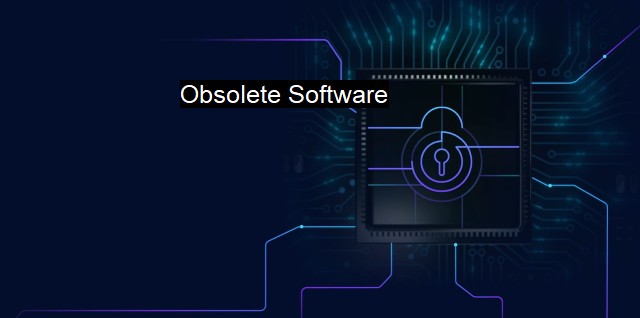What is Obsolete Software?
The Importance of Avoiding Obsolete Software for Cybersecurity and PC Safety: A Comprehensive Guide
Obsolete software refers to software that is no longer updated, maintained, or supported by its developers or vendors. This software could have once been a widely accepted utility in the realm of cybersecurity or antivirus, but advancements in technology and the emergence of sophisticated digital threats have made them irrelevant. Over time, they are replaced by technologically superior software with robust and up-to-date security features.The primary issue with obsolete software revolves around the potential cybersecurity risks rather than the software's functionality per se. Updates and patches from developers are critical to addressing inevitable vulnerabilities associated with software applications. Developers introduce these updates as new efficacy tools and to fix bugs and vulnerabilities that could compromise the efficient functioning of the software or the security of the system in which it operates. when the software becomes obsolete, these updates cease, leaving the software open to potential cyberattacks.
Exploiting such vulnerabilities in obsolete software applications comes easy to cybercriminals, who continually evolve new strategies to break into systems for malicious gains. They do this by writing code specifically designed to target these unpatched vulnerabilities. Once they find a way in, they can access sensitive information, disrupt your system's functioning, or even exert control over your system.
Obsolete software, particularly in the context of antivirus, can lead to increased risk of viruses, malware, spyware, ransomware, and other forms of cyberattacks that could incur considerable damage. Antivirus software requires regular updates because new forms of viruses and malware are continuously created. Old antivirus software may be ineffective in dealing with these threats due to their dated definitions that may not be equipped to identify and neutralize the recently developed viruses and malware.
Using obsolete software also voids any entitlement to technical support from the vendor. If a technician is engaged to repair a fault specifically connected to the software, the chance of success is generally low. This lack of support can result in extended downtime when an issue occurs, leading to loss of productivity or service availability.
In terms of compliance, laws and regulations relating to privacy and security demand all businesses' and organizations' software to be up-to-date. Non-current or obsolete software often does not meet specified standards, resulting in non-compliance. The consequence of non-compliance ranges from fines to substantial penalties depending on the severity of the breach.
Irrespective of these reasons, one might still find some organizations using outdated software systems. This can be due to various factors: financial constraints, reluctance to adapt to new systems, or the unavailability of newer versions that support certain specific tools or functionalities that the obsolete software offers. keeping in view the potential cybersecurity risks, any advantages the old software might bring are usually outweighed by the risks.
Software obsolescence is a raincloud over cybersecurity and often indicates heightened exposure to privacy and security breaches for the end user. It is therefore strongly advised that individuals and organizations regularly upgrade their systems and software tools while keeping track of software lifecycles to ensure top-notch security against ever-evolving cyber threats.

Obsolete Software FAQs
What is obsolete software in terms of cybersecurity and antivirus?
Obsolete software refers to outdated or unsupported software that may contain vulnerabilities or security flaws that can be exploited by cybercriminals. Such software is not patched or updated, making it an easy target for cyber attacks.Why is it important to avoid using obsolete software?
Using obsolete software can make your computer system vulnerable to cyber threats, including viruses, malware, and other cyber attacks. Cybercriminals can exploit the security weaknesses in outdated software to access confidential information or take control of your system.How can you identify obsolete software on your system?
You can identify obsolete software on your system by checking the version number and release date of the programs installed on your computer. If the software has not been updated or patched within the past few years, it may be obsolete and need to be replaced or removed.What should you do if you are using obsolete software on your system?
If you are using obsolete software on your system, you should uninstall it and replace it with updated software that is supported by the vendor. You can also enable automatic updates for your software to ensure that it is always up-to-date and protected against the latest cyber threats.| | A | | | B | | | C | | | D | | | E | | | F | | | G | | | H | | | I | | | J | | | K | | | L | | | M | |
| | N | | | O | | | P | | | Q | | | R | | | S | | | T | | | U | | | V | | | W | | | X | | | Y | | | Z | |
| | 1 | | | 2 | | | 3 | | | 4 | | | 7 | | | 8 | | |||||||